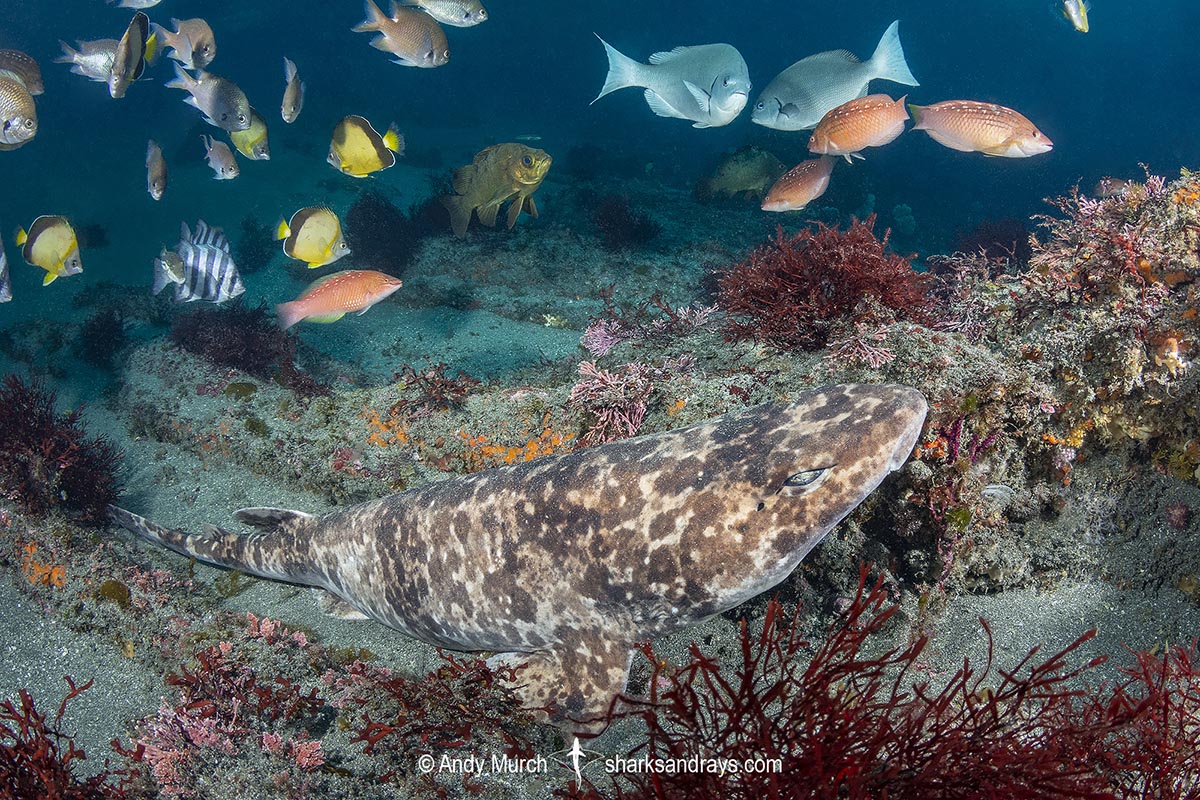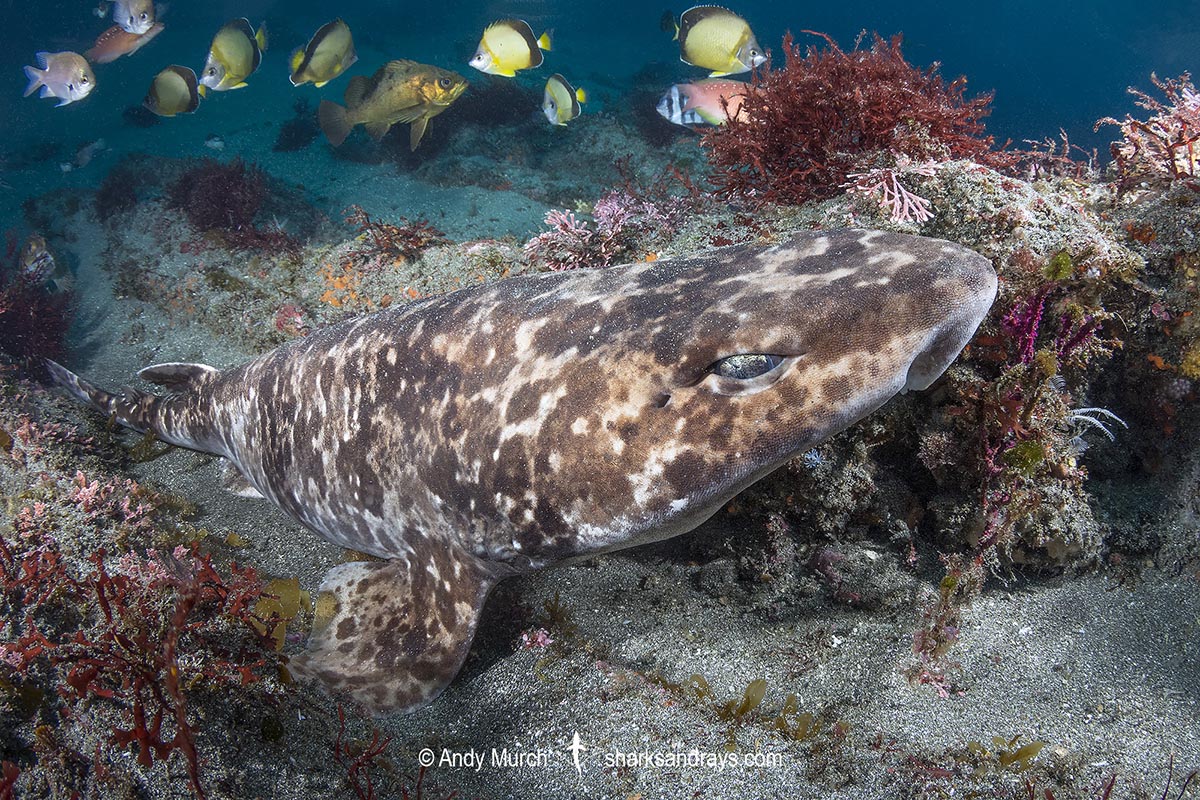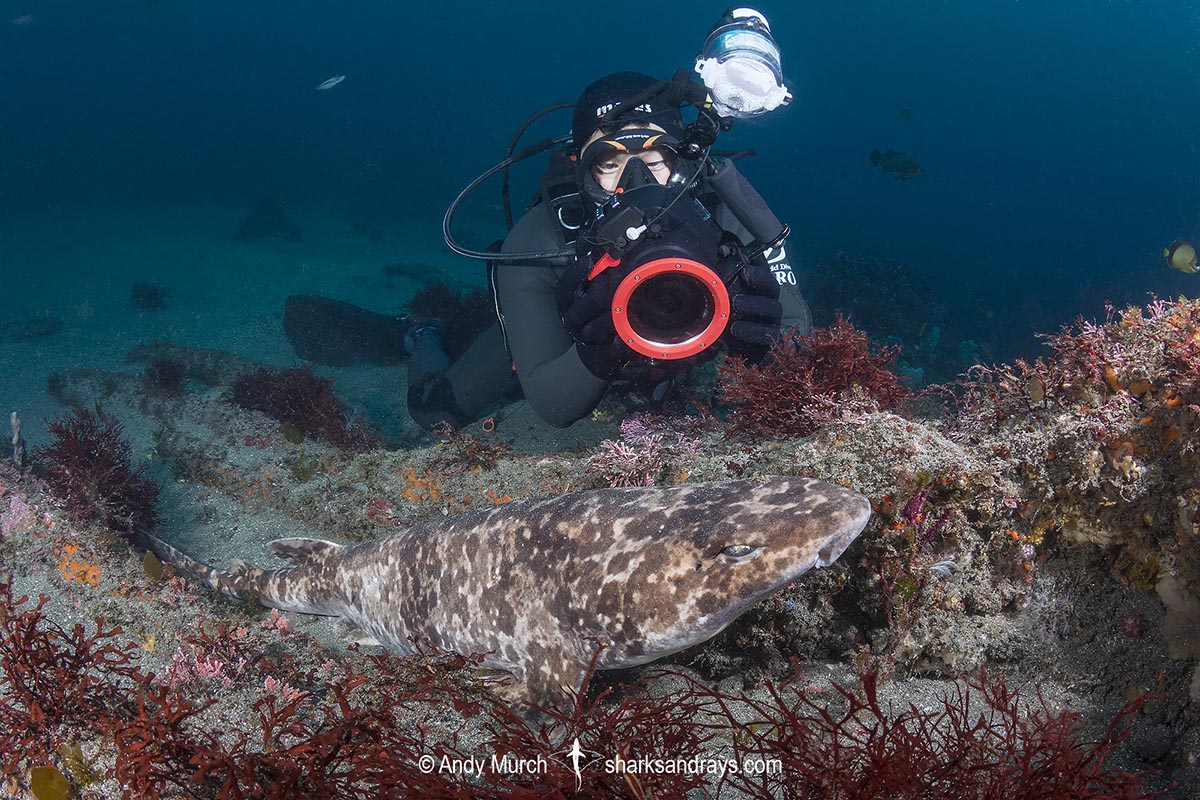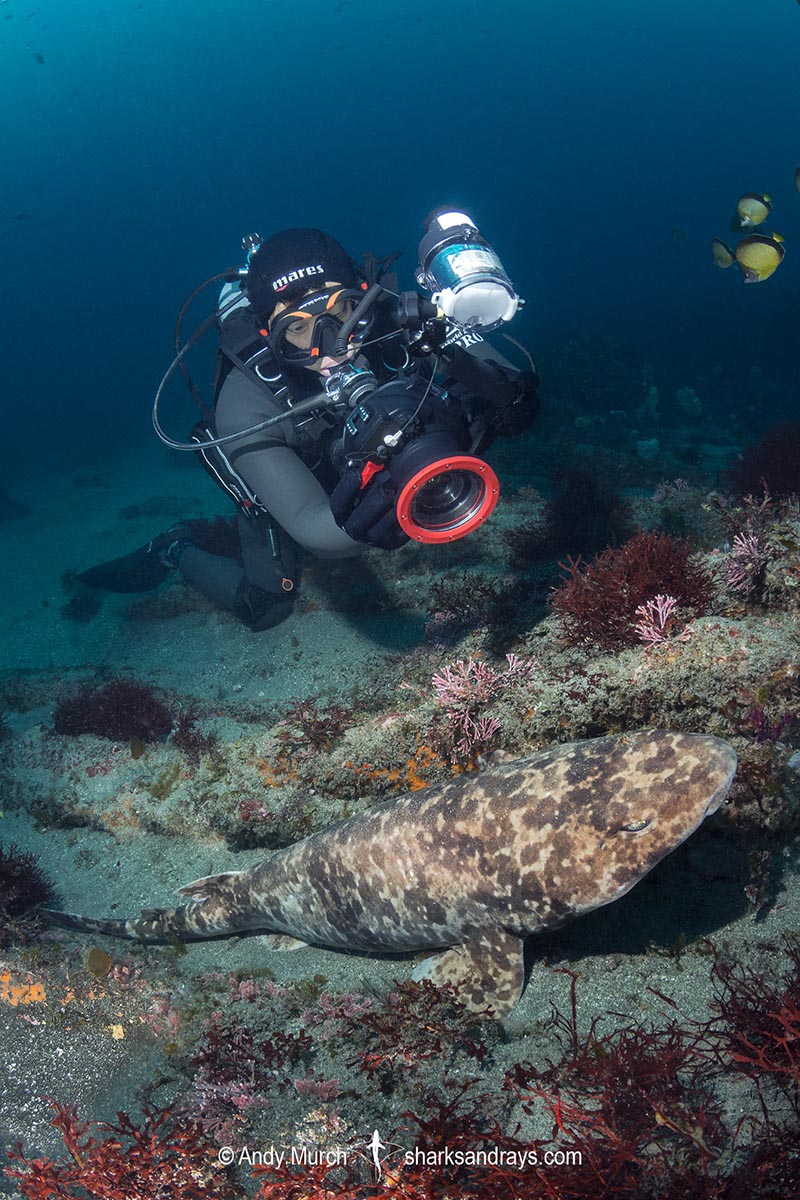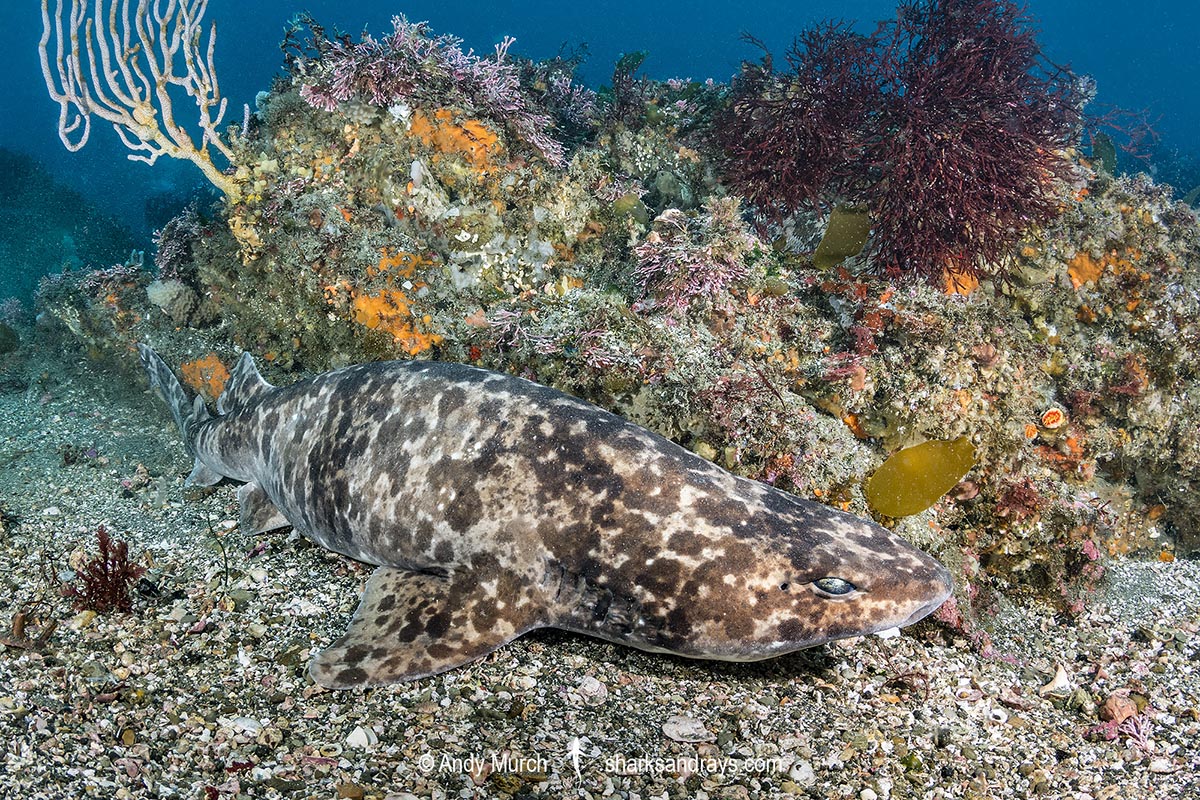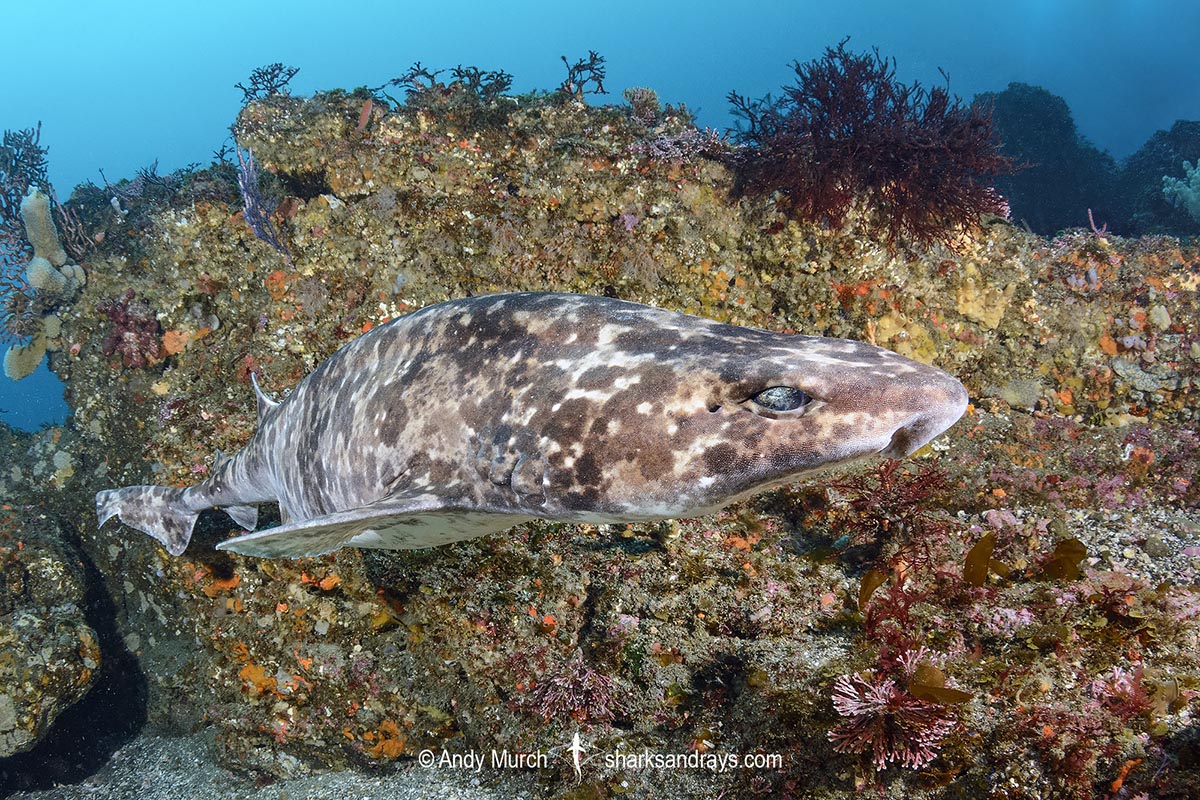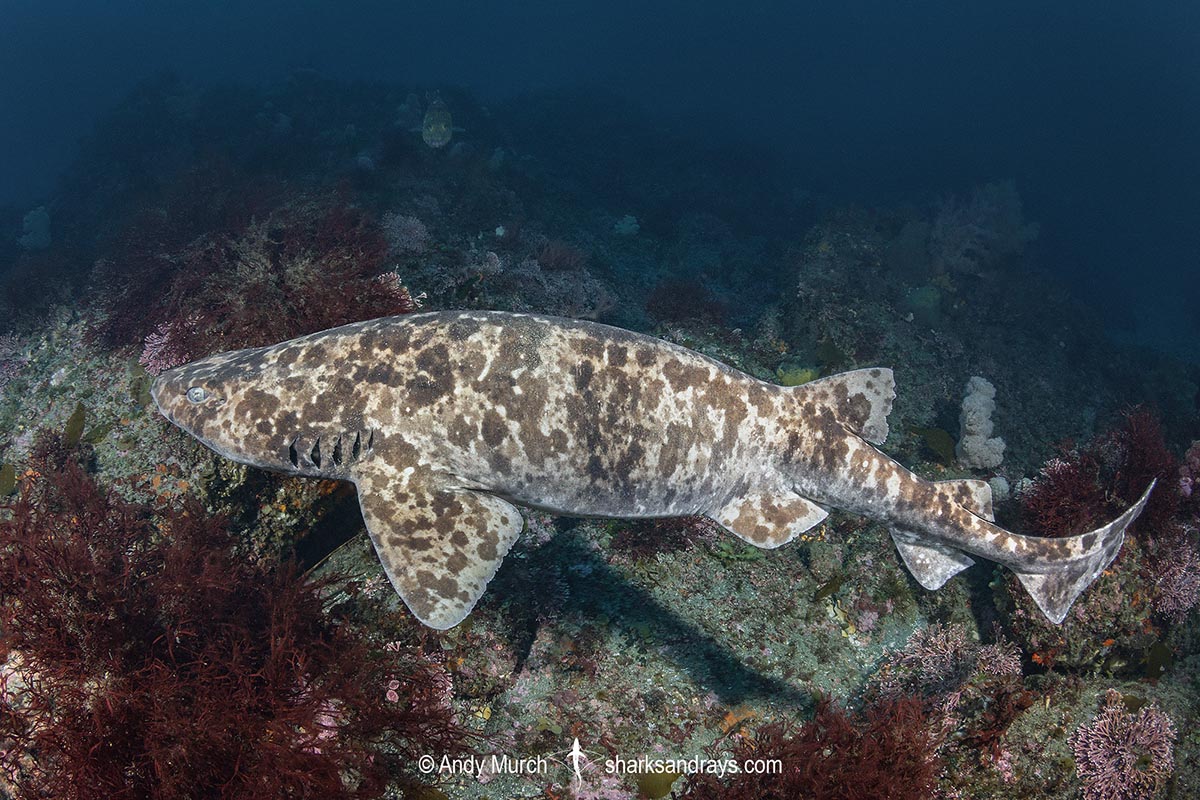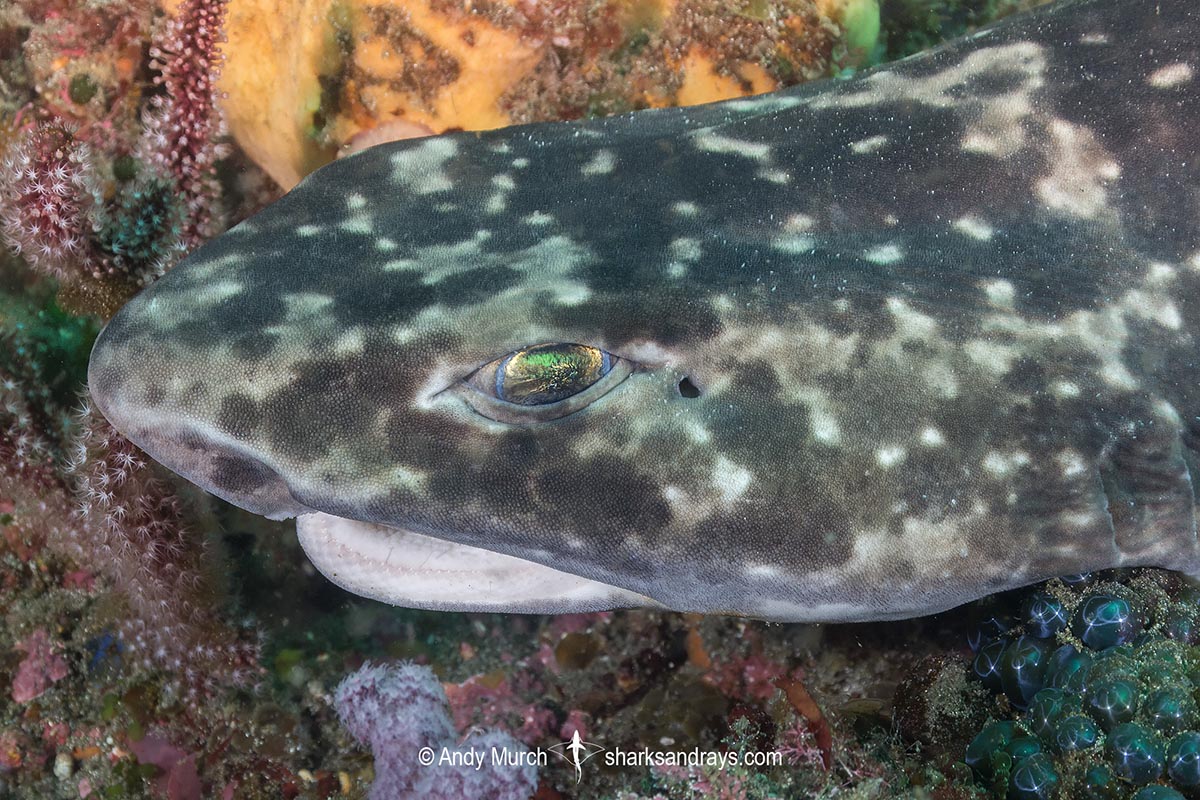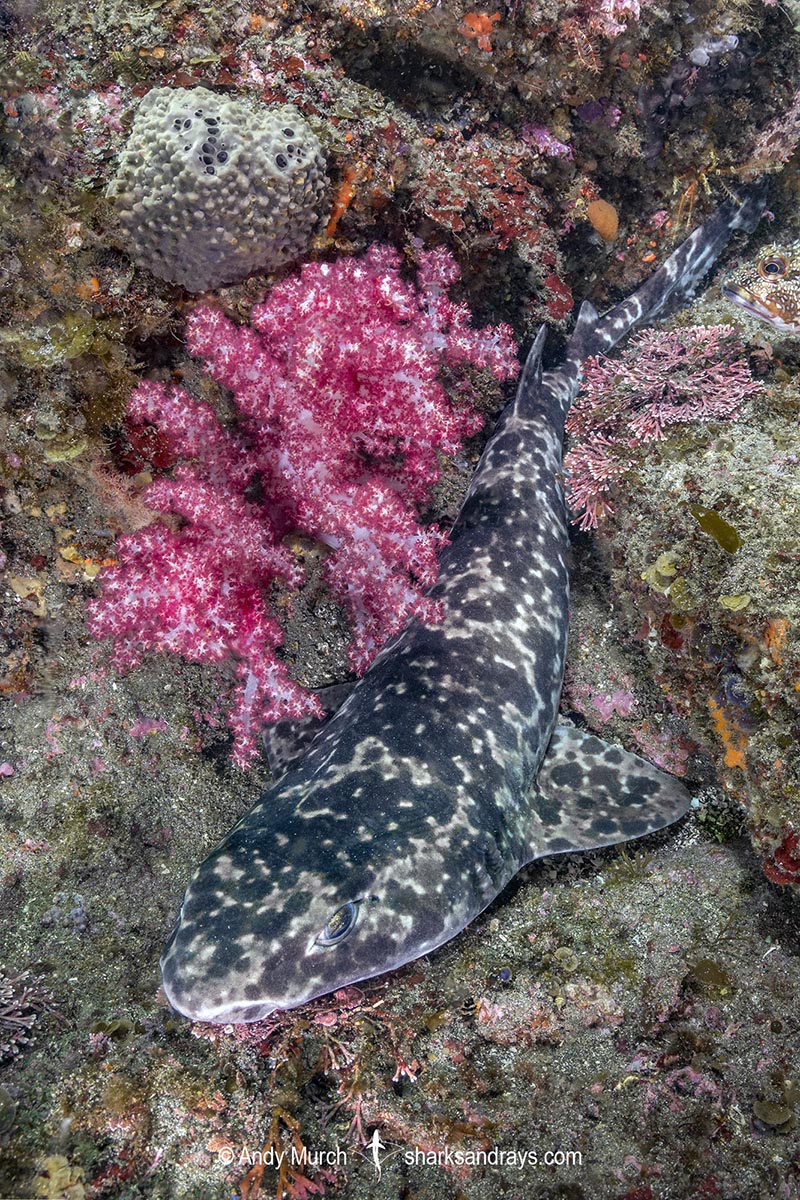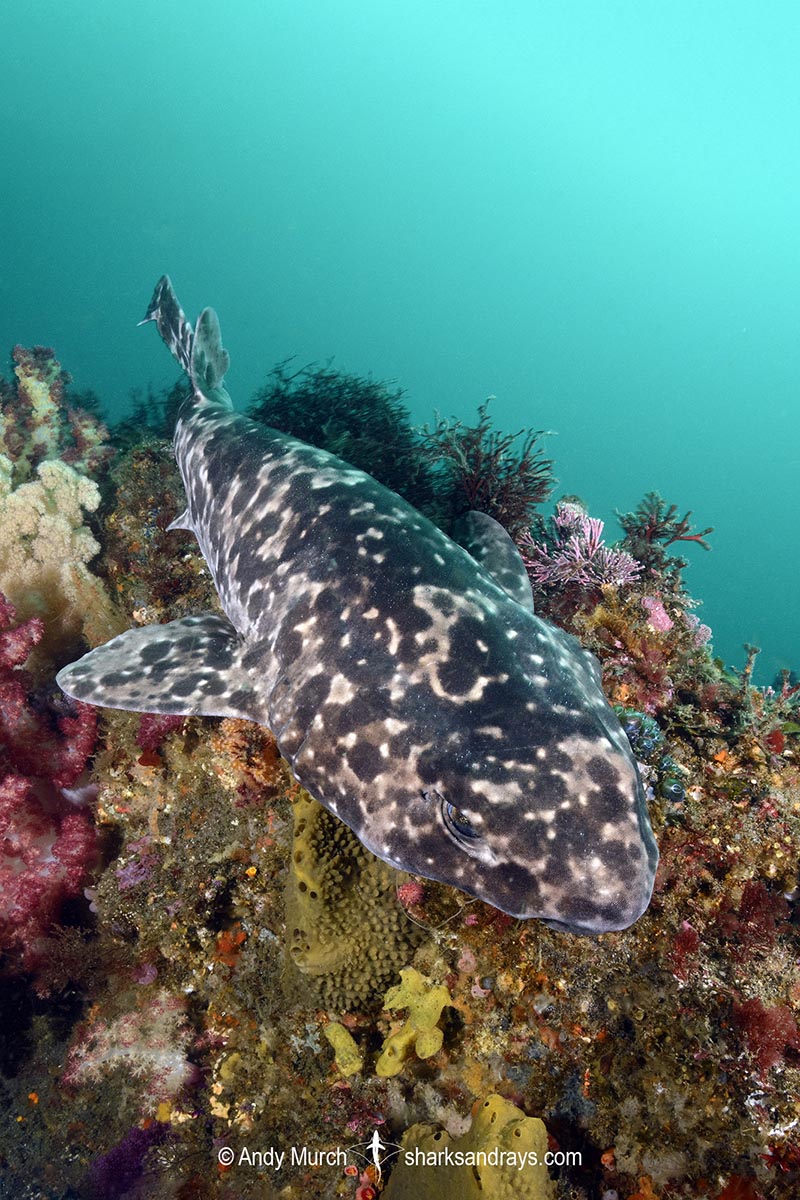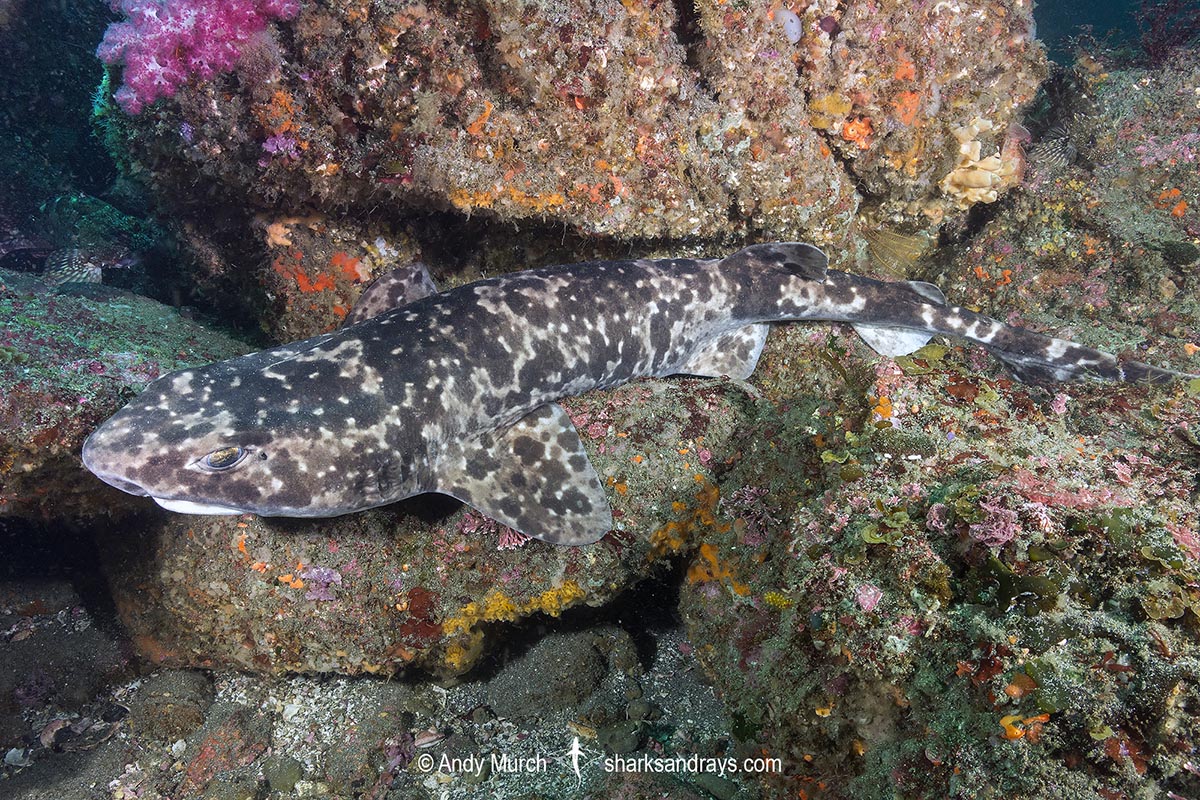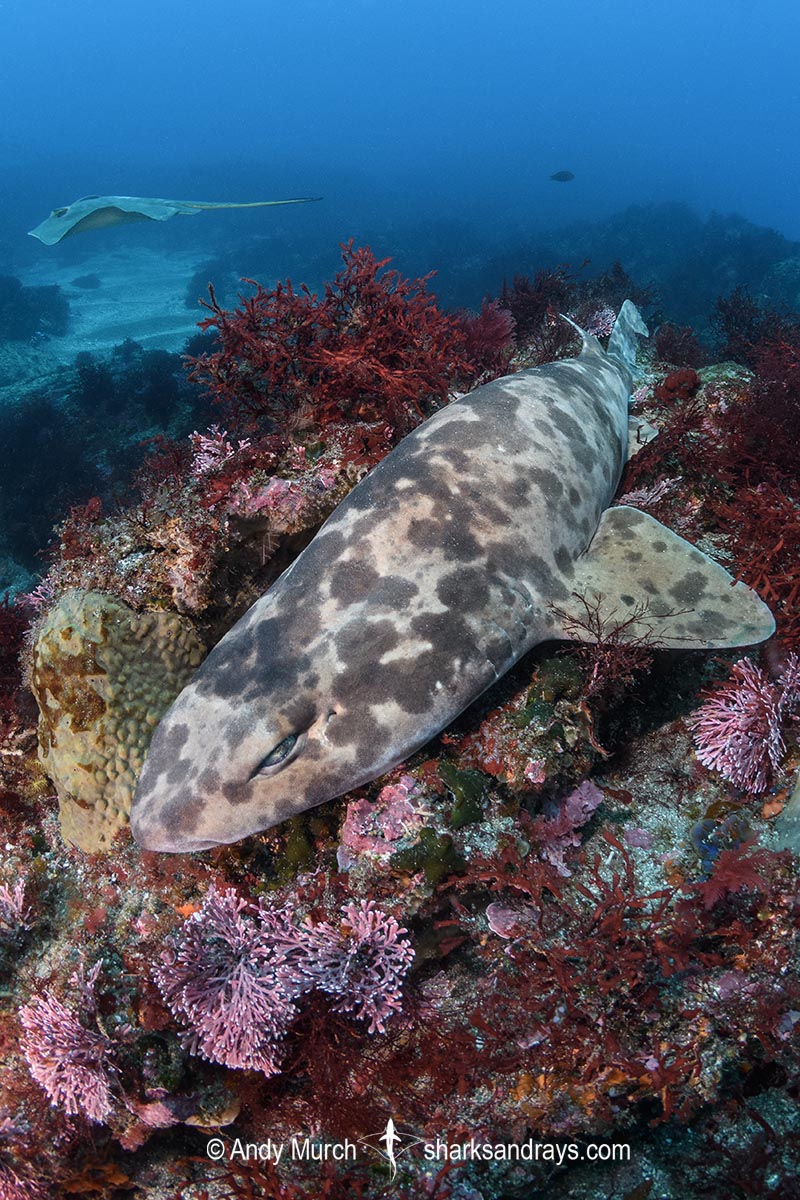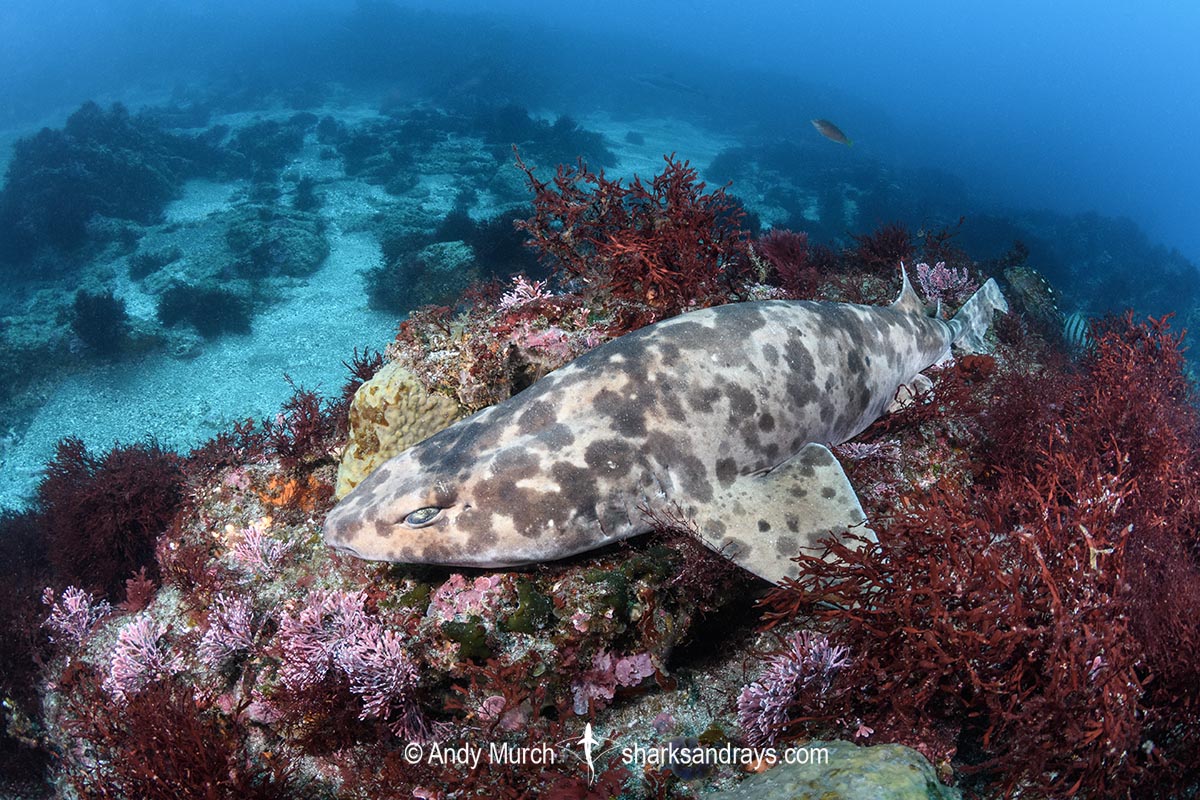Common names
Blotchy Swellshark, Japanese Swellshark.
Binomial
Cephaloscyllium umbratile.
Synonyms
Cephaloscyllium formosanum.
Identification
Stout body. Snout bluntly rounded but relatively long for this genus of catshark. Mouth width much greater than snout length. First dorsal origin approximately level with middle of pelvic fin base. Second dorsal fin level with middle of anal fin base. Anal fin larger than second dorsal. Anal fin apex rounded. Lower caudal lobe indistinct. Dorsal surface densely covered in irregular grey/brown blotches. Blotches may form subtle dark saddles. Upper caudal subterminal notch well defined.
Size
Maximum length 120cm. Size at birth 20-22cm.
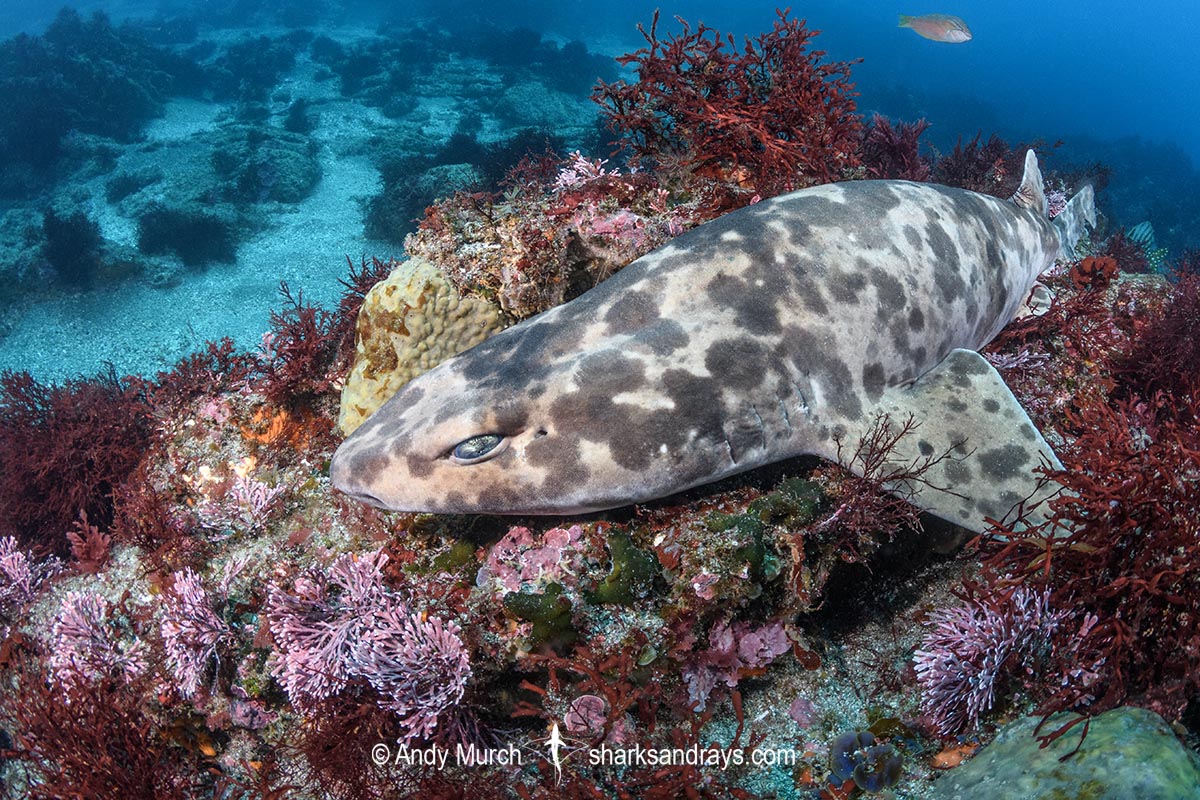
Conservation Status
DATA DEFICIENT
Although no data are available to assess population trends, the Japanese swellshark is apparently still abundant in areas that are heavily fished by trawlers. Small scyliorhinid species have proven resilient to population decline, even where they are heavily fished (for example the Smallspotted Catshark (Scyliorhinus canicula) in the northeast Atlantic). However, records of Japanese Swellshark apparently include C. umbratile and a smaller undescribed sympatric species. The two species may be confused and C. umbratile is a larger catshark, and may be more vulnerable to depletion. Therefore this species is assessed as Data Deficient until further information is available on its life-history, catches in fisheries and population trends.
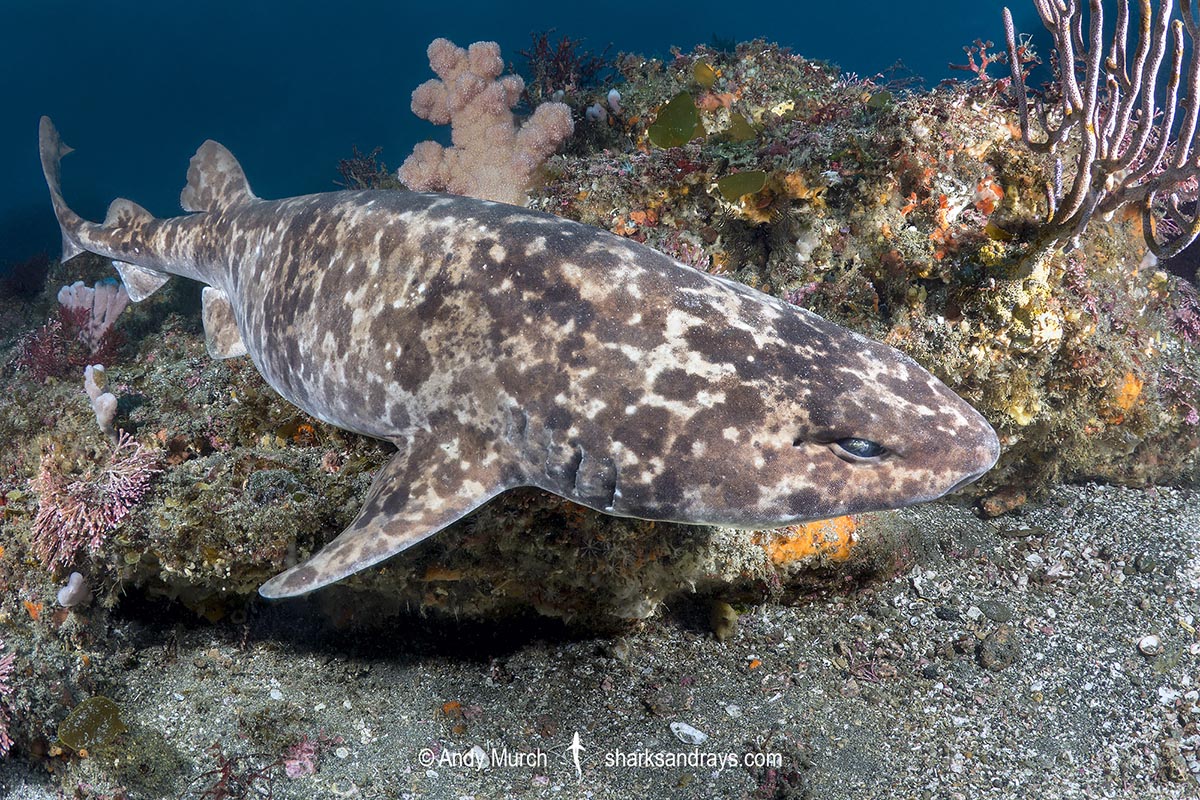
Habitat
Temperate continental shelf on sandy and muddy bottoms and rocky reefs. From 40-440m.
Distribution
The blotchy swellshark is confined to the northwest Pacific. From Japan to southern Korea, China, and Taiwan. May occur further south in Southeast Asia but sightings need confirmation as this species may be confused with other swell sharks from the region.
Reproduction
Oviparous. Hatching times and seasonality is poorly understood. Eggs may be deposited year round.
Diet
The Japanese swell shark consumes a wide variety of small fishes, sharks, molluscs and crustaceans. Japanese mackerel appear to be an important food source.
Behavior
Poorly known.
Reaction to divers
Easy to approach when resting on the reef. Not known to respond to chum.
Diving logistics
Although the blotchy swellshark occurs within the depth limit of recreational diving, encounters are extremely rare. Most encounters take place off the south coast of Honshu Island between Shizuoka and Chiba areas. However, this may just be because the area is heavily dived.
Divers hoping to see this species should dive in the winter when cooler water sharks are more likely to be in shallower water. Try searching under overhangs and in large crevices close to (or beyond) recreational depths.
Similar species
Spotted Swellshark Distinguished by plain dorsal coloration with clearly defined dark edged saddles. Known only from Taiwan.

